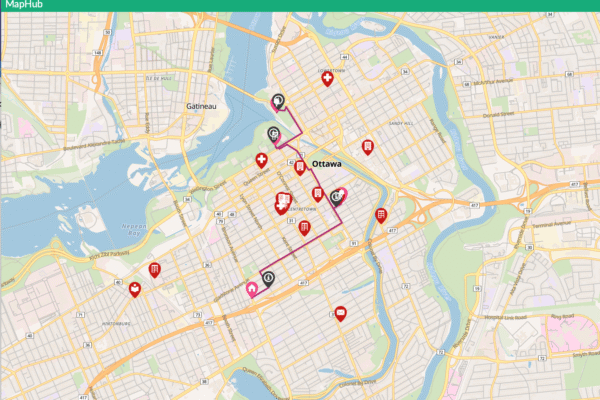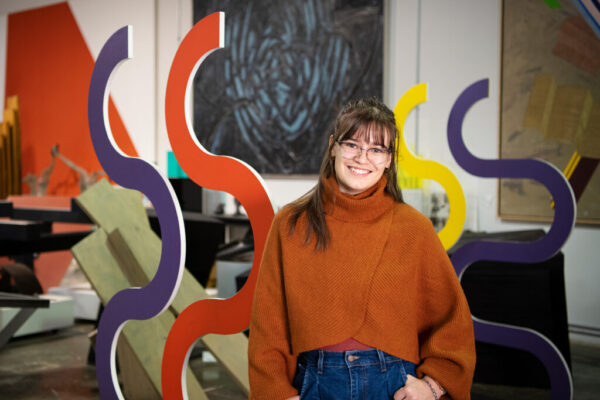Graduate Studies
The MA program in Art and Architectural History at Carleton University offers a unique breadth and depth of research expertise, teaching, and mentorship in art and architecture of various cultures and regions of the world and with a strong investment in interdisciplinarity and transcultural comparison.
Over two years, students learn about art and architectural history through course work, independent research projects, and/or internships at a range of institutions situated in the National Capital Region and beyond. Students choose from three streams: Thesis, Major Research Project, or Course Work.
The skills, expertise, and experiences garnered at Carleton have led students to successful careers in a variety of fields. Our students work in museums, galleries, the heritage sector, libraries and archives and have continued their graduate studies at the doctoral level.
Meet the Art & Architectural History Community
Carleton hosts an enthusiastic and strongly student-oriented faculty. Their research interests include areas of:
- Canadian art, architecture and design with a special emphasis on Canadian Gothic Revival and modern architecture, Canadian art of the nineteenth and twentieth centuries, and the history of photography in Canada, diasporic art and art history
- Chinese visual culture, with special emphasis on contemporary Chinese art
- Contemporary global art with a special emphasis on transcultural and post-colonial historiography
- Critical curatorial practice and museum studies
- Design history, including interior, industrial, and everyday design, with special emphasis on interwar production
- European architecture and visual culture, from medieval to contemporary art with special emphasis on Renaissance naturalism, theories of vision and representation, 18th-century French and British art (especially prints), 19th-century German art and art history, Neo-dada art in 1960s France and Europe
- Global modernisms, with a special emphasis on transnational perspectives and decolonization
- Indigenous visual culture, with a special emphasis on contemporary Indigenous arts and constructions of Indigeneity in popular culture
- Islamic art and architecture, with a special emphasis on early modern Ottoman empire, cross-cultural theories of design and of the built environment in the wider Mediterranean world and the Middle East
- Japanese art, with a special emphasis on Postwar Japanese Art
We conceive of art and architecture as aesthetic, cultural and social practices that are constituted, framed and reframed by multiple and entangled histories. It is against that background that faculty members are invested in cutting edge interdisciplinary perspectives, social art history, critical historiography, relational comparison, transnational/transcultural art history, and object-oriented analyses of visual and material culture.
Student Experience
Our students also produce exciting, new research, with the support and training of faculty. We encourage independent, idea-led research and seek to instill in our students an historical consciousness and critical awareness of their postionality. See some recent student work:

Student Projects: A Minecraft Adventure in Design History
Sarah Mihychuk’s final master’s project utilizes the Minecraft platform as a portal into Canadian design history.

Student Projects: (Dis)entangling Capital Counterpublics
Explore a storymap of Ottawa’s hidden histories created for ARTH 5010 “Theory and Practice: Art and Architectural History.”

Crafting Careers in Art and Culture
Students and alumni of the School for Studies in Art and Culture’s practicum programs share their work experiences
Students find themselves in a dynamic and supportive community with its own Graduate Society and graduate journal, Render.
Our Program
One key advantage of the MA in Art and Architectural History is the Practicum Program, which provides students with insights and experiences in the professional world. It goes without saying that the National Capital Region offers numerous exciting placements in institutions related to art and architecture and these sometimes lead directly to careers in the fields.
Regardless of what stream they choose, our MA students benefit from the wealth of resources on hand in Ottawa. In addition to access to these libraries, archives, and world-class collections of art and material culture, they also can take advantage of international networks on art historical research and exhibition making, for example through the Transnational and Transcultural Art and Culture Exchange (TrACE).
For those interested in curatorial studies, a post-graduate diploma can be combined with the MA.